The Samsung Galaxy S9 and S9+ Review: Exynos and Snapdragon at 960fps
by Andrei Frumusanu on March 26, 2018 10:00 AM ESTDisplay Evaluation & Power
The displays of the Galaxy S9’s don’t change much compared to the Galaxy S8’s. The S9 uses an upgraded AMOLED DDIC S6E3HA8 instead of last year’s S6E3HA6. The new panels are AMB577PX01 on the Galaxy S9 and an AMB622NP01 on the Galaxy S9+.
A nice addition with Samsung’s Android 8.0 OS on the Galaxy S8 and Galaxy S9 is the ability have fine-grained control over colour temperature – although it’s disappointing to see that this is limited to the Adaptive Display colour mode. The remaining colour modes continue Samsung’s tradition to provide different colour space modes. Adaptive Display is a wide gamut mode which is intentionally wide and doesn’t correspond to any standard. AMOLED Cinema targets the DCI P3 colour space, AMOLED Photo targets Adobe RGB and the simple “Basic” mode targets sRGB accuracy.
One big introduction of Android 8.0 was supposed to be the inclusion of wide colour gamut colour management support. This was enabled on Google’s Pixel 2 devices. To find out more how the Galaxy S9 behaves I wrote a quick app which check’s Android’s APIs. Unfortunately the Galaxy S9 doesn’t have any colour management support and switching colour modes through the APIs does nothing. There’s still a lot of questions remaining in terms of wide gamut support on Android, particularly for Samsung devices who make extensive usage of colour management and display modes through the mDNIe solutions on their AMOLED devices.
There’s a plethora of reasons of why Samsung could have decided not to enable support, some of them which are hardware requirements on the display pipeline. The Exynos 9810 and Snapdragon 845 both should support 10-bit display pipelines (which is not necessarily a requirement, but simplifies things) but for example the S6E3HA6 was still an 8-bit DDIC which complicates things and requires tone remapping and possibly dithering techniques. The situation is a bit of a conundrum and it’ll probably take some time before Samsung introduces a full 10-bit wide gamut software-to-display device. The Galaxy S9 for now remains the same as previous generation in terms of colour gamuts and colour depths.
And as always, measurements are performed with an X-Rite i1Pro 2 spectrophotometer, with the exception of black levels which are measured with an i1Display Pro colorimeter to achieve the most accurate results possible in an area where the i1Pro 2 can be somewhat unreliable. Data is collected and examined using SpectraCal's CalMAN software.
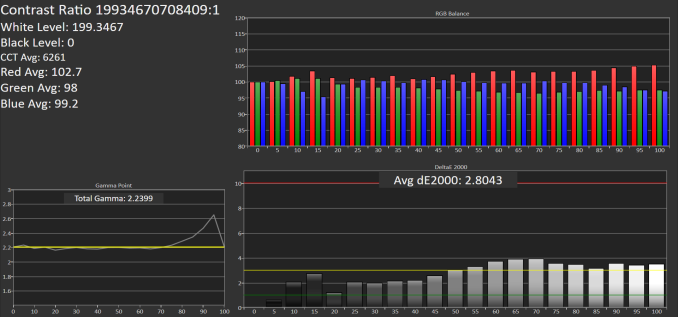
sRGB (Basic mode)
SpectraCal CalMAN
The Galaxy S9 and S9+ display generally the same characteristics as the Galaxy S8. Minimum brightness goes down to 1.5 cd/m² while manual maximum brightness tops out at 300-320 depending on colour mode. Auto-brightness boost in bright conditions will overdrive the panel at up to 625 cd/m² at 100 APL (full white) which is the same brightness as the S8, both in manual and auto modes.
The Galaxy S9 and S9+ units I have here still suffer from slightly too low colour temperatures both in sRGB and DCI P3 modes, coming in at around 6250K, slightly better than the Galaxy S8 unit I have which also was too red at 6150K. Samsung’s Adaptive Mode default to higher colour temperature of 7000K, however in that mode it’s a non-issue as you’re able to adjust the colour balance to one’s preference. The Galaxy S9 and S9+ showcase better total gamma than the S8 units I have here, coming in at 2.23 on the S9’s vs 2.13 on the S8.
Greyscale accuracy is good even though we’re veering slightly too much into the reds because of the under-targeted colour temperature.
In direct sunlight the S9’s retrain fantastic readability thanks to the high-brigthness mode that the phone switches to. In this mode the display ignores the selected display mode and goes into a special very saturated and very low gamma mode to improve legibility.
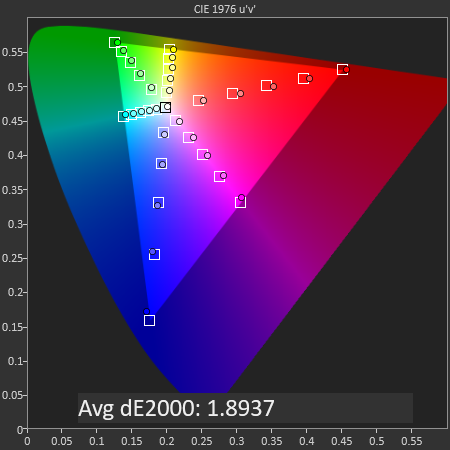
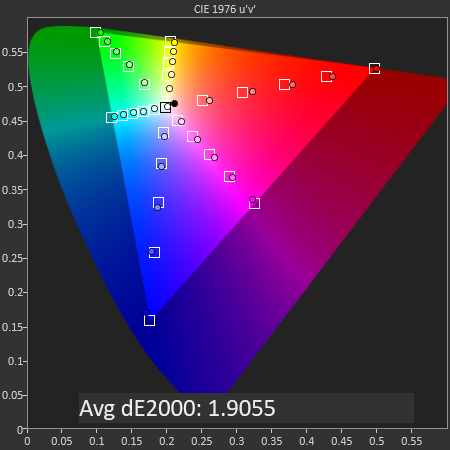
sRGB (Basic mode) & DCI P3 (AMOLED Cinema) Saturations
SpectraCal CalMAN
In terms of gamut and saturations accuracy the S9+ behaves excellently in sRGB and DCI P3 modes. However I did see that the mid-level red saturation points were too high and this prohibited the S9’s from reaching lower overall dE2000 figures. Because I measured the exact same deviation between the S9 and S9+ I believe this to be a calibration issue of the mDNIe profiles rather than an issue of the panels which Samsung could theoretically fix through software if they wanted to (along with the colour temperature being too red).
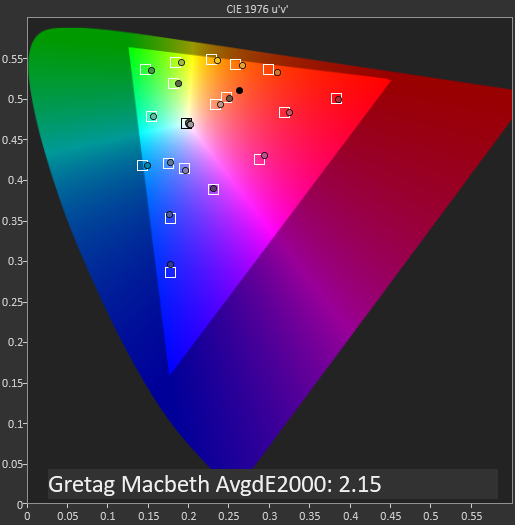
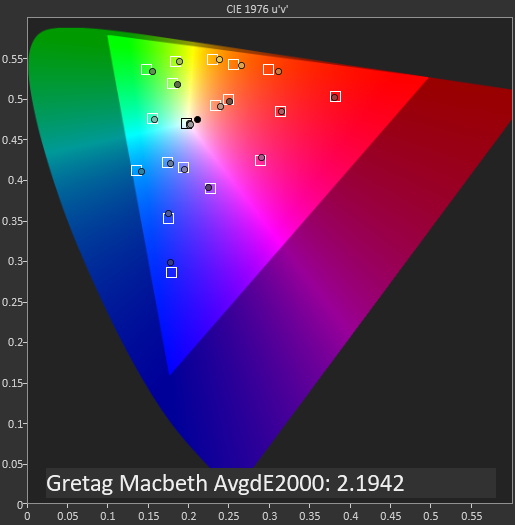
sRGB (Basic mode) & DCI P3 (AMOLED Cinema) GMB
SpectraCal CalMAN
In the GMB charts the Galaxy S9 and S9+ again posted identical figures with overall good accuracy in sRGB and DCI P3 modes. Again the biggest mis-alignments here happen in the red tones are they are too saturated than what they should have been.
Something we’ve never covered before is a certain behaviour of AMOLED screens at low brightness and dark contents. Samsung has for generations had issues with transitions from complete black (pixels off) and lowest level colours. Now with having more competition in the OLED scene both from LG in terms of panels and from Apple with the iPhone X, I found it interesting to compare how the different devices behave.
This sort of evaluation is extremely hard to capture as it can’t really be measured with tools into a quantized figure. I resorted to simply capturing the phone’s screens with a DSLR at long exposure times. Alongside the long-exposures which exaggerate the brightness of the scene compared to the reference image, I also included the same image captures but with the high-lighted shadow clipping showcasing the areas of complete black of the screens. The phones had all been calibrated to a fixed 20cd/m² brightness to have an apples-to-apples comparison.
The Galaxy S9 and S9+ both are darker and more even in brightness than the Galaxy S8. This matches our measurement which showed the S9’s have higher gamma than the S8 (for our units). The Galaxy S9’s provided a better representation of the source material than the S8. There is a difference between the S9 and S9+ as the S9+ seemed to have a higher gamma or more clipping between black and the darkest areas. The problem here is that this clipping gradient isn’t smooth enough and in motion this results in very noticeable moving artefacts.
The iPhone X behaved very differently than any Samsung devices and provided a significant image quality advantage in dark scenes. When looking at the shadow clipping highlighting that Apple is doing some very fine dithering between fully dark areas and the next highest brightness levels. When in motion the iPhone X just provides an extremely good experience in dark scenes with little to no visible artifacts.
The Pixel 2 XL comes with an LG panel and DDIC. The results here are a complete mess as not only does the Pixel 2 XL have issues with the dark areas, but actually the gamma curve at low levels is far too high and this clips actual detail of the image into complete black. The LG V30 has the same issues and I hear this is a hardware limitation on the way LG handles brightness control through PWM – it’s not able to retain sufficient ADC bit depth resolution at low brightness and causes a more compressed image.
Apple’s screen also doesn’t suffer from the “purple smudging” when transitioning between black areas. This seems to be caused by a lag in the response-time of the blue subpixels, not able to shut off quickly enough. The point here is that if Apple can handle dark scenes at low brightness levels at good quality, then so should Samsung, so here’s hoping Samsung’s engineers can focus on this issue and improve it in future generations.
| Screen Luminance Power Efficiency 100% APL / White |
||||||
| Device | Screen Luminance Power at 200cd/m² |
Luminance Power (mW) / Screen area (cm²) Efficiency |
||||
| Galaxy Note 5 | 504 mW | 5.64 | ||||
| Galaxy S6 | 442 mW | 5.99 | ||||
| Galaxy S9 | 563 mW | 6.69 | ||||
| Galaxy S8 | 590 mW | 7.01 | ||||
| Galaxy S5 | 532 mW | 7.21 | ||||
| Galaxy Note 4 | 665 mW | 7.22 | ||||
| Galaxy S5 LTEA | 605 mW | 8.20 | ||||
| Galaxy S4 | 653 mW | 9.22 | ||||
A big question I wanted to see an answer to is if the Galaxy S9 had improved in terms of power consumption and efficiency. As it stands, power on the S8 and S9 were nearly identical and the measured difference was within 5%. We haven’t seen an improvement in AMOLED emission power efficiency in a few generations now so I do wonder if my projection of AMOLEDs surpassing LCDs in overall efficiency from 3 years ago has actually happened or not. I didn’t have time to go in-depth in other current generation devices for this article, but I’ll make sure to give an update in a separate piece in the near future.
Overall the Galaxy S9 screens behave mostly the same as the ones on the Galaxy S8’s. The only differences between the screens that will be visible is the higher gamma at low brightness levels which slightly improve the quality. The Galaxy S9’s screens are still one of the best on the market and I don’t really see any deal-breaking issues with the phones in that regard.


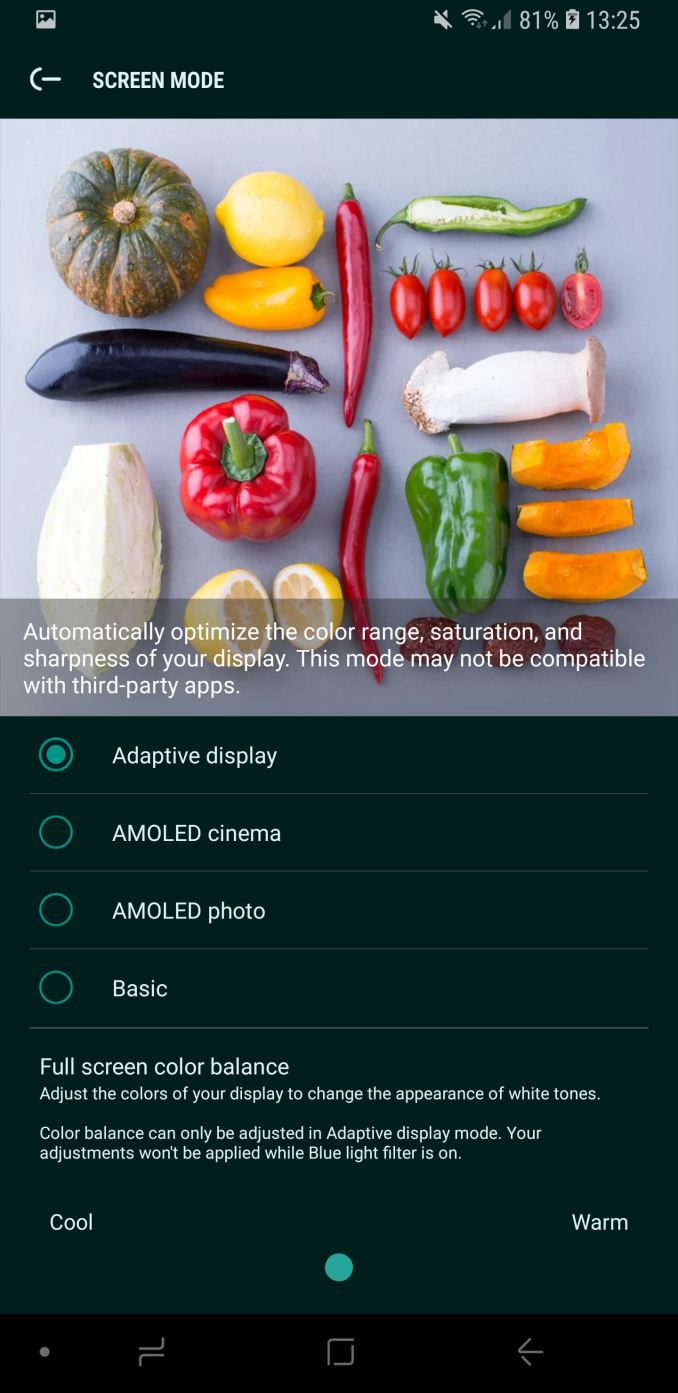
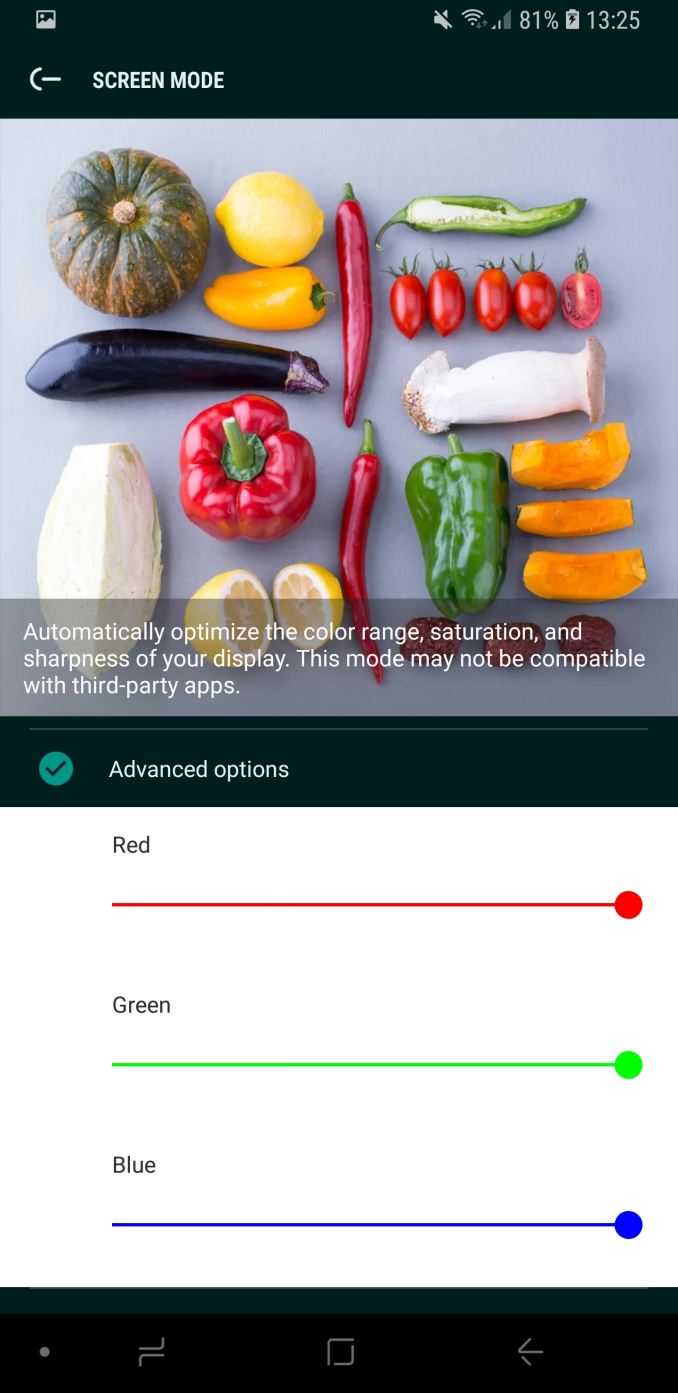














190 Comments
View All Comments
Andrei Frumusanu - Monday, March 26, 2018 - link
I literally uploaded a 4K60 video on the S845 S9+. They always had it.https://youtu.be/9g88TIi-p2U
N Zaljov - Monday, March 26, 2018 - link
This article, as always, is some top-quality stuff. Really enjoyed reading it, Andrei!As for the CPU: Ah! Hotplugging! We finally meet again after all these years! How's it going ever since you've been banned from this planet? ;-)
Honestsly: I don't think that a company like S.LSI would seriously start fiddling around with deprecated mechanics like hot-plugging and slow asf DVFS scheduler settings, if there wouldn't be a major architectural/implementational flaw within the M3 cores.
This might sound like a far-flung theory, but could it be possible that there might be something wrong with the way how the M3 cores handle power-gating in a way that it just takes the CPU way too long to "warm up" cold blocks (like Register files, INT- & FP-Units etc.) that aren't utilized, which kind of translates into these terrible response times? While this might only explain the poor DVFS implementation, I don’t really find a reason why „hot-plugging“ should be the way to go for any sane semiconductor engineer or BSP developer.
Yes: It’s easier to implement and it costs less transistors (and wiring as well), but with modern process nodes, the added transistor budget simply wouldn’t even matter when you compare it with the huge amount of logic that’s there. In fact, I wouldn’t be too surprised if the hardware actually supports a more fine-grained control (with stuff like WFI for instance...), but at some point the BSP developers simply said „well, this stuff has already been working for us in the 5410 and 5420, so let’s go!“. Duh.
On the GPU side of things though, it doesn't look as bad as I initially suspected: S.LSI greatly increased their effort into improving perf/w of their Bifrost implementation, a big differentiationpoint between HiSilicon's last two generations and the appalling heap of junk of a GPU implementation in form of E8995's G71MP20.
Andrei Frumusanu - Monday, March 26, 2018 - link
> if the hardware actually supports a more fine-grained control (with stuff like WFI for instance...)WFI, core power down and cluster power down all work perfectly as intended and are being used. If they wouldn't be then this thing would melt. They use the hot-plugging just to force the scheduler. There's also no way to know which parts are of the S.LSI BSP and which parts are from the mobile division. I'm very sure all of this is likely mobile division additions however it can't be confirmed as they both use the same copyright name (Samsung Electronics) in the source files.
N Zaljov - Monday, March 26, 2018 - link
Thanks for clarifying. My apologies, I skipped the part that mentions "...to force thread migrations between the cores...".Another question: What software build is your S9 running on? The last update (afaik Build RC5) supposedly fixed some performance related issues and I was wondering, if they changed the bias of their governor (or at least tried it).
Andrei Frumusanu - Monday, March 26, 2018 - link
The review was done on ARC5.Quantumz0d - Wednesday, March 28, 2018 - link
Thanks for this Andrei, Also this article is pure gold !!Loved every bit of it from the Architecture to the benches, explanation, the wording, fantastic work there sir.
That Googles ridiculous decision to block Accessibility & the most essential 3.5mm jack mention and honest true facts about it in simplistic way yet hitting the bullseye, and the flow of the article is just marvellous art. Keep it up !!
One more thing I would suggest is, you might consider teaming up with Supercurio from XDA who built the Voodoo sound for Wolfson chips for Audio Analysis would be a great addition !!
Thank you again ! Looking forward for more.
tuxRoller - Monday, March 26, 2018 - link
The kernel has recently (https://lwn.net/Articles/737157/) completed a, nearly complete, rewrite of the hot-plugging core. This has made it both much faster and more reliable. So, it's very far from deprecated (though I won't speak to the way Samsung is using it here).Quantumz0d - Wednesday, March 28, 2018 - link
Exactly what I thought. After the SD810 the Hotplugging is very bad and inefficient. I wasn't surprised when the initial fantastic analysis was done by Andrei, but its really bad about the Battery life regression. Also I don't get this hype around the A series chips after that massive battery fiasco, they tune them so badly and look at the iPhone internals they barely have metal plate contact for heat transfer. Yeah I agree on the GPU part too surprised to see this. But I think Samsung wanted to have similar performance between the devices and down tuned the CPU in one and GPU in another...pure speculation.Apple manages to cheat always and damn all these idiotic sites who only show GB and say here's the Exynos and all. I didn't like how Samsung advertised the new SoC chip likes of Apple going for peak and not sustained.
I think that SD85x might have full custom cores like the OG Kryo from 820, I wish that to happen. Feels great to see how Adreno crushes the A11.
zer0hour - Monday, March 26, 2018 - link
Superb article, certainly of quality that lives up to the Anandtech name. I've been waiting for details of the E9810 S9 for ages, and this article is really the only one that explores the reasons for its weird real world vs synthetic performance.Speedfriend - Monday, March 26, 2018 - link
After seeing the S9 initial performance impressions and being in the UK, I decided to go for a pixel 2 XL for myself and an S8 to replace my gfs iPhone 6S. Very happy with both decisions, the pixel 2 XL is so fast and the S8 was a crazy deal.It is a real pity that performance and battery life are so hampered in the s9810 versions as I have loved my last few Samsungs. But if Google makes another good pixel this year, I can't see myself going back.